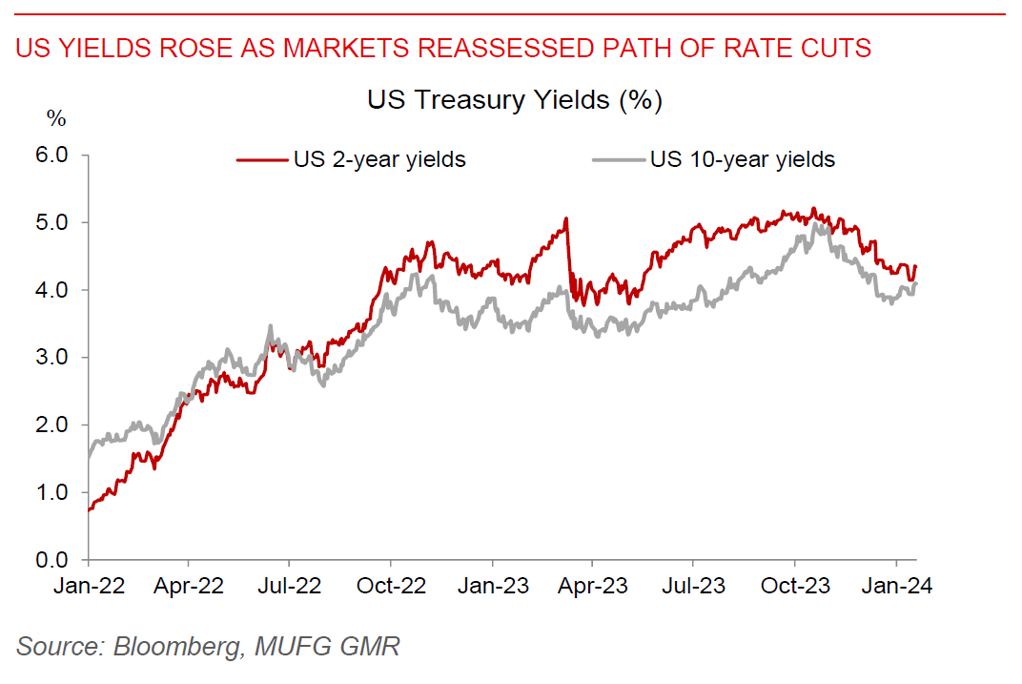Ahead Today
G3: US housing starts, US initial jobless claims, Japan National CPI
Asia: China FDI
Market Highlights
US yields have edged higher to 4.1%, while the US dollar index (DXY) has strengthened close to its 200-day moving average. Stronger US December retail sales data (0.6% mom versus consensus for a 0.4% gain), coupled with a recent pushback by US Fed’s Christopher Waller against early US rate cuts, have led markets to reassess the pace of rate cuts by the US Fed this year.
China’s GDP growth picked up to 5.2% y/y in Q4 2023, from 4.9% in Q3, partly due to low base effects. The Chinese economy also expanded by 5.2% in 2023, meeting the government’s 5% target. But sequential growth slowed to 1% q/q in Q4 from 1.5% in Q3, despite a slew of targeted policy easing measures by the government. Most notably, the property downturn has deepened, remaining a drag on fixed asset investment. New home prices in 70 Chinese cities fell 0.45% m/m in December, marking the sharpest fall since February 2015. Retail sales growth also slowed.
Over in Europe, ECB President Christine Lagarde has signaled for a summer rate cut and commented that market pricing for aggressive rate cuts this year won’t help the inflation fight. This has led markets to also pare back their expectations for the quantity of ECB rate cuts this year.

Regional FX
Asian currencies are generally weaker versus the US dollar amid a combination of disappointing China economic data releases and rising US yields. CNH (offshore Yuan) has weakened to 7.22 versus the US dollar, weighing on sentiment across the Asia region. Notably, the Korean Won weakened by 0.9% to 1345 versus the US dollar. Meanwhile, despite inflation being contained, Bank Indonesia (BI) kept its policy rate at 6% at its first meeting of the year as it seeks to maintain rupiah stability. We think BI will move closely with the US Fed in the rate cutting cycle so as to avoid causing excessive currency volatility. In Singapore, non-oil domestic exports (NODX) fell 1.5% y/y (or -2.8% m/m seasonally adjusted) in December, reflecting weakness in electronics exports.

